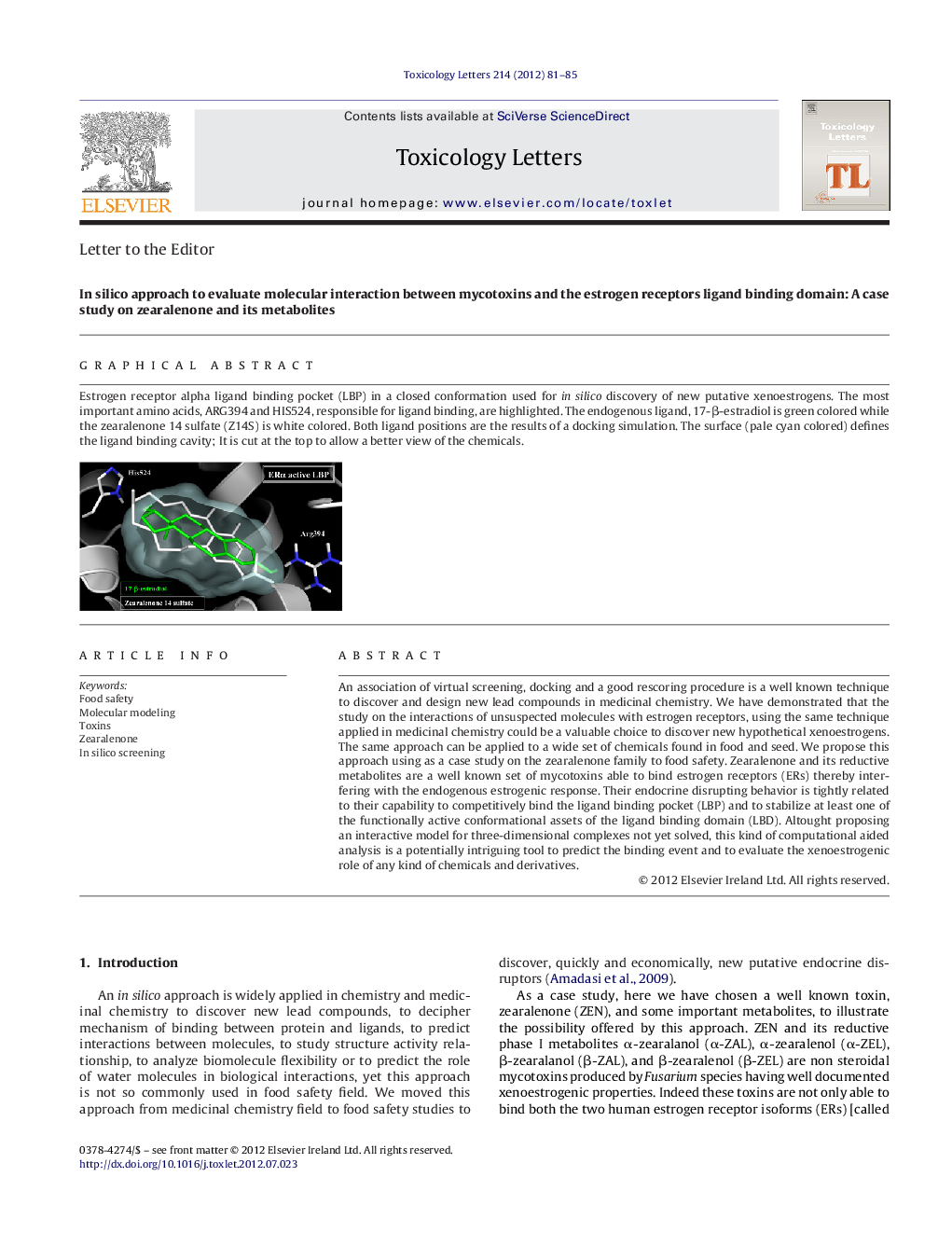| کد مقاله | کد نشریه | سال انتشار | مقاله انگلیسی | نسخه تمام متن |
|---|---|---|---|---|
| 2599507 | 1133212 | 2012 | 5 صفحه PDF | دانلود رایگان |

An association of virtual screening, docking and a good rescoring procedure is a well known technique to discover and design new lead compounds in medicinal chemistry. We have demonstrated that the study on the interactions of unsuspected molecules with estrogen receptors, using the same technique applied in medicinal chemistry could be a valuable choice to discover new hypothetical xenoestrogens. The same approach can be applied to a wide set of chemicals found in food and seed. We propose this approach using as a case study on the zearalenone family to food safety. Zearalenone and its reductive metabolites are a well known set of mycotoxins able to bind estrogen receptors (ERs) thereby interfering with the endogenous estrogenic response. Their endocrine disrupting behavior is tightly related to their capability to competitively bind the ligand binding pocket (LBP) and to stabilize at least one of the functionally active conformational assets of the ligand binding domain (LBD). Altought proposing an interactive model for three-dimensional complexes not yet solved, this kind of computational aided analysis is a potentially intriguing tool to predict the binding event and to evaluate the xenoestrogenic role of any kind of chemicals and derivatives.
Estrogen receptor alpha ligand binding pocket (LBP) in a closed conformation used for in silico discovery of new putative xenoestrogens. The most important amino acids, ARG394 and HIS524, responsible for ligand binding, are highlighted. The endogenous ligand, 17-β-estradiol is green colored while the zearalenone 14 sulfate (Z14S) is white colored. Both ligand positions are the results of a docking simulation. The surface (pale cyan colored) defines the ligand binding cavity; It is cut at the top to allow a better view of the chemicals.Figure optionsDownload as PowerPoint slide
Journal: Toxicology Letters - Volume 214, Issue 1, 2 October 2012, Pages 81–85